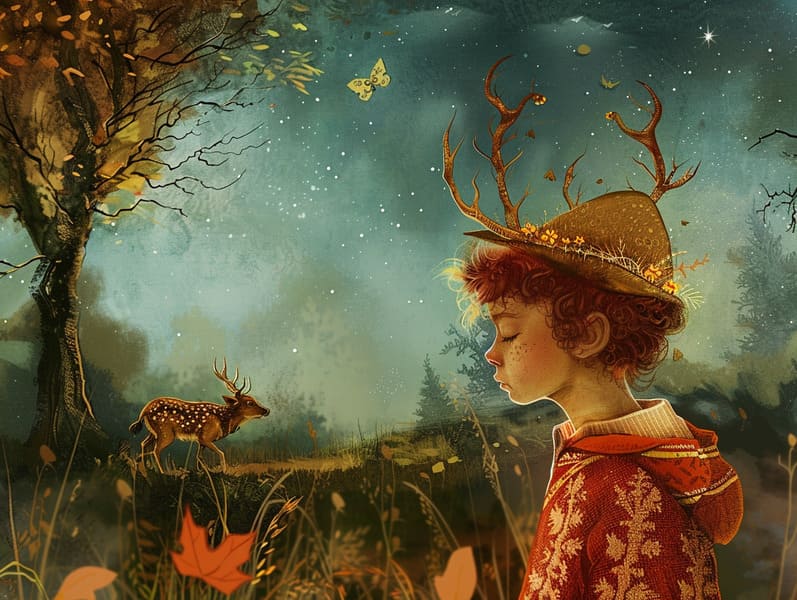The Inception of Grimm's Fairy Tales and Their Continued Charm.
The Inception of Grimm's Fairy Tales and Their Continued Charm.
Blog Article

Vintage fairy tales have deep roots. These stories have been conveyed from one generation to the next millennia before they were ever inscribed. They originated from a variety of backgrounds, including European traditions. They were initially narrated among older generations, often carrying themes and messages relevant to the societal norms and beliefs of the time.
Jacob and Wilhelm Grimm, Jacob and Wilhelm Grimm, were among the first to compile and publish many of these beloved stories. Their collection, "Grimm's Folk Tales," included tales like "Cinderella," "The Story of Hansel and Gretel," and "Snow White," which have since become cornerstones in the world of traditional fairy tales. Similarly, Andersen's charming narratives, such as "The Sea Maid," and "The Duckling that Could," have enchanted hearts worldwide, establishing their place in the pantheon of beloved fairy tales.
Even though they are old, traditional fairy tales remain as applicable as ever, especially as children's bedtime stories. These enchanting tales are now available in multiple formats, including beautifully illustrated books, captivating animations, and free fairy tales online.
Their ongoing significance can be credited to several magical reasons:
Vital Lessons: Old fairy tales often convey important moral lessons. Tales like "The Story of the Boy Who Cried Wolf" teach the virtue of sincerity, while "The Story of the Tortoise and the Hare" show the merits of steadfastness and meekness. These stories offer children clear distinctions between virtue and vice, shaping their moral compass in a soft yet profound way.
Empathy and Awareness: Old fairy tales frequently showcase beings facing obstacles and hardships, provoking young readers to identify with their struggles and cheer for their triumphs. For instance, "Beauty and the Beast" shows us the value of seeing inner beauty to realize the inner self of a being, building sympathy and recognition.
Cultural Awareness: Many fairy tales are interwoven with the cultural contexts from which they emerged. Immersing in these narratives can provide enlightening views into different traditions, cultivating a sense of global respect and discernment.
Fantasy and Innovation: The supernatural elements in fairy tales—supernatural elements—awaken children’s fantastical thinking. These stories lead readers to otherworldly realms, boosting creative thinking and a sense of curiosity that endures a lifetime.
Timeless fairy tales are not only magical but also edifying. They serve as bewitching tools in enhancing various mental and emotional abilities in young readers. When classic fairy tales are told out loud, they boost verbal development by showing new linguistic elements and sophisticated sentence structures. This practice also improves auditory skills and attention, as children concentrate deeply, anticipating to see what happens next.
Furthermore, conversing about the themes and characters of fairy tales can advance intellectual skills and evaluative skills. Young readers are shown to recognize patterns, expect results, and realize cause and effect. These conversations also benefit children articulate their thoughts and feelings, fostering their emotional intelligence.
In today’s technological era, the existence of digital fairy tales has made these narratives more acquirable than ever. Web-based platforms and applications give wide arrays of traditional fairy tales that can be perused or listened via anytime, anywhere. Fairy tales spoken are particularly popular, presenting an fun way for kids to be a part of these whimsical stories. Voice books and voiced videos bring characters and settings to life, often paired with spellbinding musical scores and tunes that heighten the story journey.
The timeless fascination of old fairy tales lies in their ability to adjust to current times while continuing with their underlying messages. Contemporary modernizations of these stories often highlight more different figures and modern settings, making them understandable to today’s audience. However, the underlying themes of braveness, empathy, and integrity remain unchanged, continuing to influence young readers of all ages.
Fairy tales also offer a sense of coziness and predictability. They yield a well-ordered narrative with a distinct beginning, middle, and end, often finishing with the culmination of conflicts and the triumph of goodness over badness. This constancy can be solacing for kids, affording a sense of steadfastness in an unstable world.
Classic fairy tales continue to entrance and edify new generations, maintaining their allure and importance in modern society. As kids' bedtime tales, they afford a perfect blend of fantasy and learning, promoting moral values, empathy, and creativity. The existence of online storybooks and the prevalence of fairy tales told out loud ensure that these classic stories remain within reach to new generations.
By keeping and circulating these tales, we continue to commemorate the rich tapestry of creativity and cultural heritage. Whether you are discovering a vividly illustrated book, seeing a digital collection, or playing an audio story, the grandeur of ancient fairy tales is always within reach. These fairy tales demonstrate of the enduring effect of storytelling and its ability to hold us together across epochs and places.
Whether you are discovering a beautifully illustrated book, exploring a virtual library, or playing an read-aloud book, the charm of Grimm's fairy tales is always website within reach.
These fairy tales convey of the undying influence of storytelling and its ability to gather us across centuries and lands, forming a connection that fascinates and enlightens alike.